M.I. Engine House

Beez Neez now Chy Whella
Big Bear and Pepe Millard
Sat 16 Jan 2016 23:17
|
Maria Island Engine
House
  We left the Fossil Cliffs and made our way
uphill.
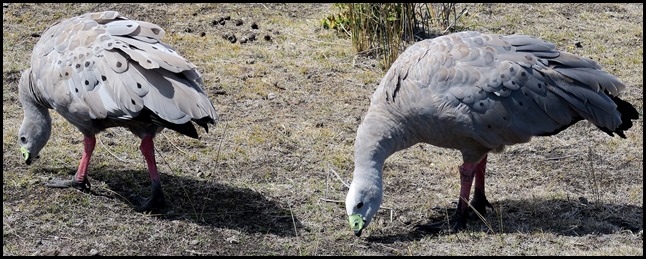 We had company from a
pair of Cape Barren geese. These big birds are the rarest geese in the
world, can drink salt water, fly well but very rarely swim.
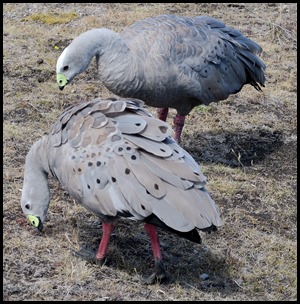 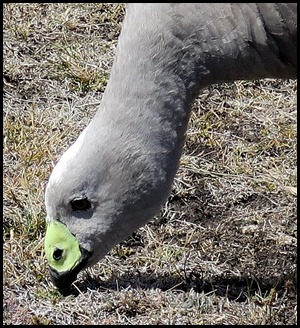 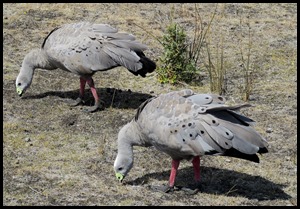 They were happy to
graze with us. Their noses look like someone has been at them with yellow pay-doh.
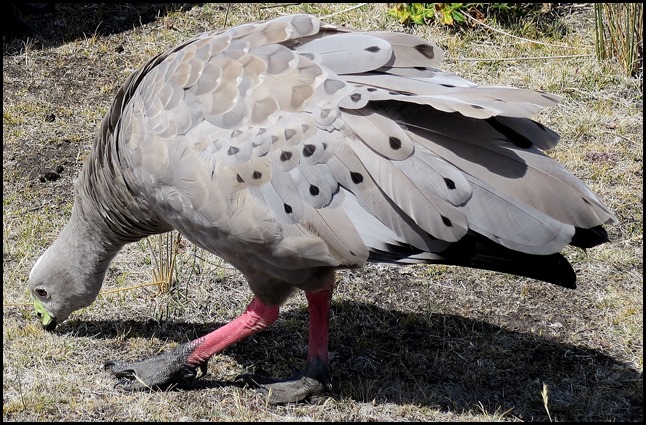 Quite pretty
markings.
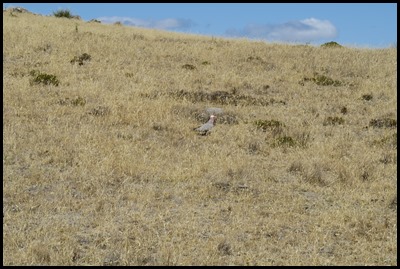 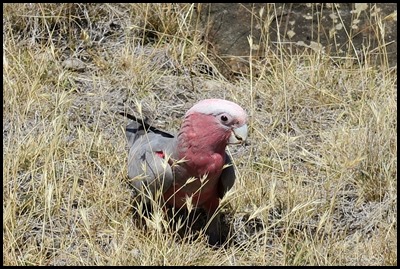 Next up was a galah, very happy for me to get up
close and personal.
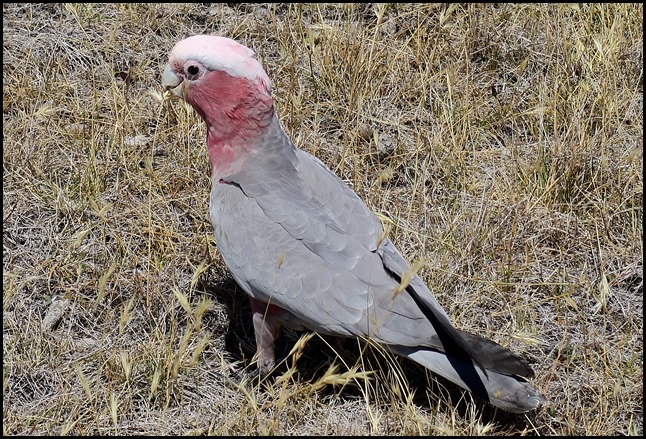 This happy little
bird can live in captivity to seventy or eighty years of age. In the
wild, unlikely to reach twenty, bringing the average down to a modest forty.
Once paired they form strong bonds to their other half. just like me.......Don’t make me bite you. I’m
very taken with these chaps but Beez does worry about her teak.
 Toward the trees a chap
watched us for a while before hopping off.
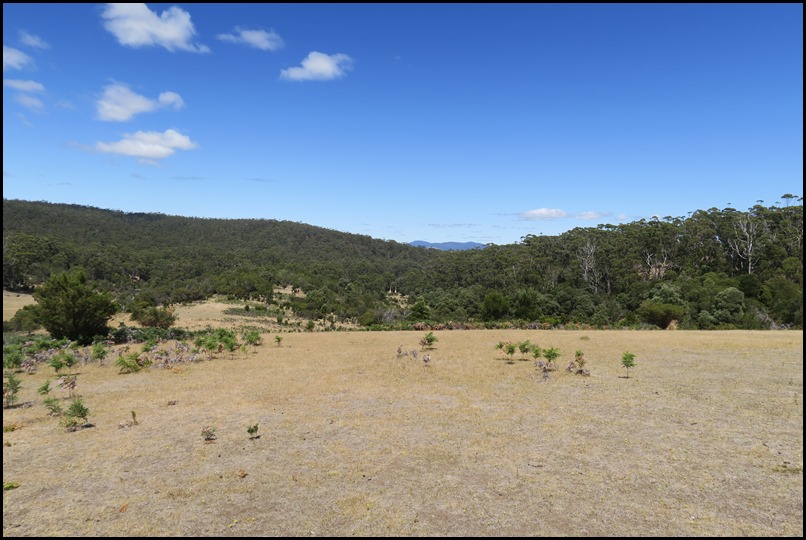 From our vantage point we could see a building in the distance, perhaps the engine house.
Somewhere in the trees on the left is the convict built reservoir.
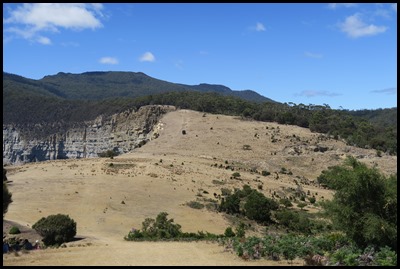 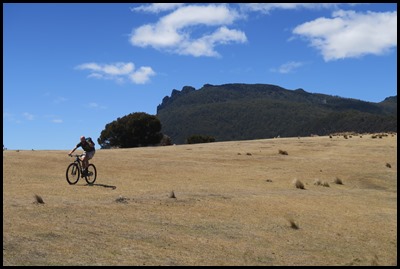 We could see some
bicycles coming down from the Bishop and Clerk, took a breather and spoke
encouraging words to the
straggler.
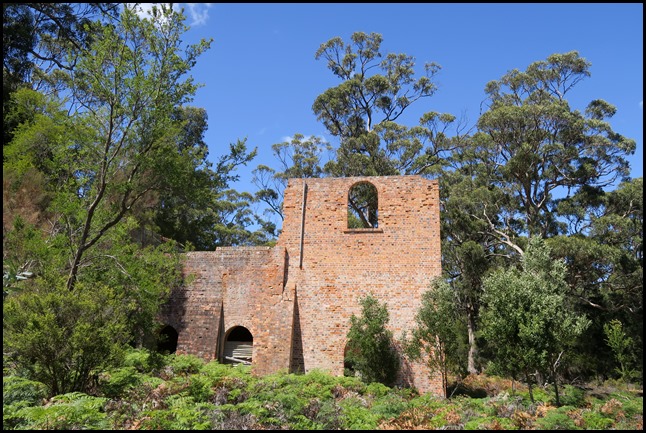 Adapted from “Maria
Island Brickfields Precinct Conservation Plan 1992. The engine house sits at the heart of
what was the major industrial area of Maria Island from the 1820’s to 1920. The
valley surrounding the building contains remnants of brick making – including
some of the oldest evidence of brick making in Australia – plus reservoirs,
roads, clay pits, houses, railway lines, quarrying, drainage, mining, geological
exploration, sawmilling and kilns, just to name some. It’s also thought that the
convict burial ground is located nearby.
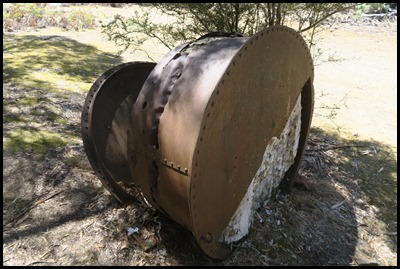 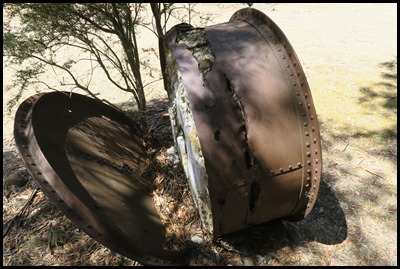 The engine house was built by Diego
Bernacchi in the late 1880’s to house the machinery – most likely a steam engine
– that would drive a number of industries on the island, including brick making,
lime manufacturing, cement making and timber cutting. The vaulted ceilings and
buttressed walls suggest that the building was designed to support heavy
machinery, while the discarded grindstone now lying on the ground outside, shows
evidence that it was a flour grinding stone converted to be part of a steam
driven machine for grinding cement.
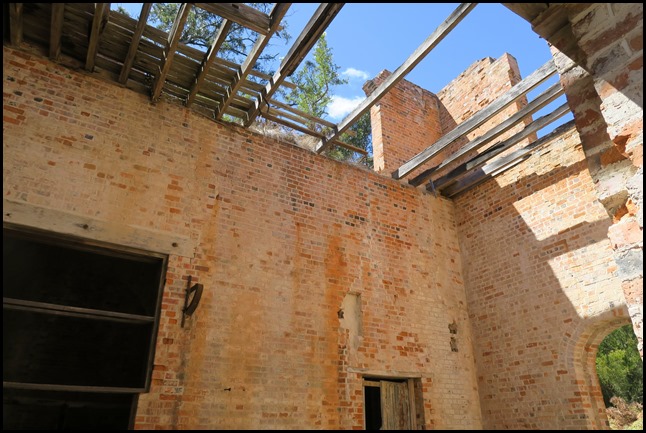 When it was first built, the engine
house would have been in the middle of all the activity and excitement about
Bernacchi’s early plans for the island. Across the valley there was the
manager’s house and a worker’s cottage. Closer, on the flat around the engine
house, there was a large weather board building [15 x 18 metres] to store lime
and possibly cement. There was a water tower, plus a kiln – possibly for brick
making, or for making small samples of cement – and on its southern side a stone
crusher. On the hill behind the engine house, where the convicts also had kilns
and quarries, there were new quarries, and kilns made of brick and stone and
used in the manufacture of lime [a product made from limestone]. Beside the
creek was a sawmill.
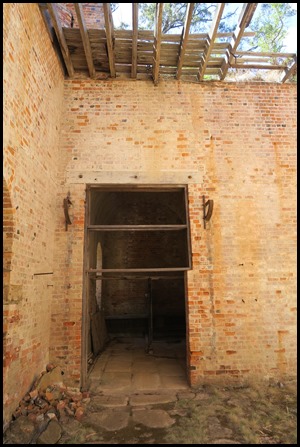  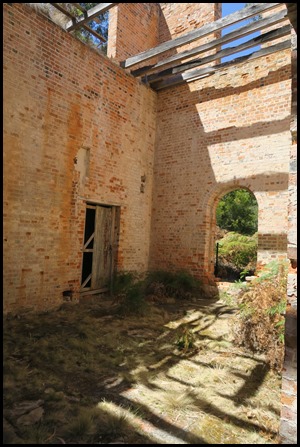 The most historically significant of
Bernacchi’s industries during the 1880’s-1890’s was the production of portland cement [a stronger and more
practical product than the previous type]. Successful cement making was
extremely rare in the late 1880’s, but in this valley Thomas Adkins pioneered a
process for making cement that used blue lias [a type of stone], and a few years
earlier examples of Maria Island cement had been sent to the 1888 Melbourne
exhibition and considered a triumph. In 1891 Bernacchi and Thomas Brewer
patented yet another new method for producing portland cement. Although these
early attempts at cement manufacturing on Maria Island were never commercially
successful, Bernacchi and his associates can rightly claim to have been pioneers
in the field.
During the twentieth century the
cement making moved to a waterfront site and the majority of the quarrying on
the island occurred at the Fossil Cliffs. After 1907 the large kilns were partly
demolished and the engine house became known as ‘The Stables’, reflecting the
quieter pace of life in the valley, and the continuing story of ‘reuse’ of
buildings and materials on Maria Island.
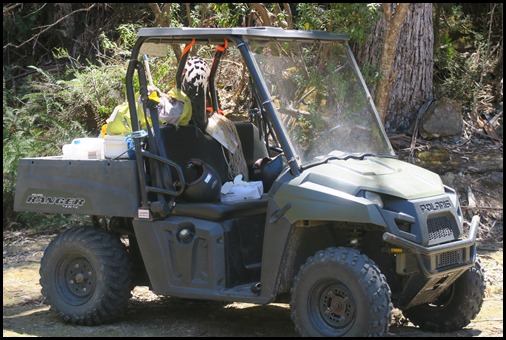 Just as we had finished looking around the
engine shed a little 4wd buggy pulled up. “If you walk the track to the
reservoir double quick, you’ll see us open a Tassy devil trap, you can see what
we get up to”. No sooner the word than we set off at a very fast trot but never
breaking into a canter. Each corner in the track we hoped to see said buggy, but
no. A mile later and just losing the will, there it was
parked up...........
 ALL IN ALL SOME BEAUTIFUL
BRICKWORK
MUCH BIGGER THAN I
EXPECTED |